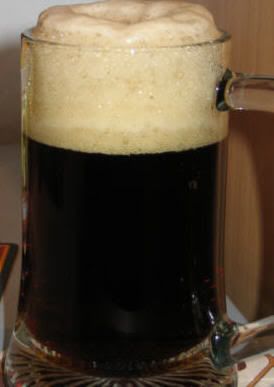So this is the starting point, eh?
One of the first rules they teach you in writing is not to begin with a cliche. Were a better man, I wouldn't. The first thing that comes to mind is, "A journey of a thousand miles begins with a single step." Instead I'd like to propose this: "A journey of 52 beers begins with a single sip." Starting tomorrow, January 7th in the year of our Lord 2010, I will begin a personal trip. This blog is here to record in writing - and on video - as I explore the world of Beer... Practically for the first time!
A lot of you know how it goes. Unless you went to "one of those colleges" a lot of your friends might turn down a beer saying something like "No thanks, that stuff tastes like piss!" You and I both know it takes some getting used to, and I'm not gonna lie, I'm new to this. I've been drinking for years, but I was always the friend making the pee jokes about the fizzy yellow stuff in my friends' cups. In fact, until probably fifteen months ago, I didn't care for it at all, and it didn't even really catch hold of my taste buds until last year.
A little background - I grew up in Saint Louis. Yeah Saint Louis, Missouri, home to Budweiser the
King of Beers. You can't sneeze without accidentally banging your head on an eagle-shaped neon sign, or without spilling someone's 'Light. I never liked the stuff, actually. I was pretty happy to agree with friends turning the stuff down for the taste alone. Give me a bourbon, or something mixed and I was happy. Not to be a snob, but that's because I didn't know what beer was.
It started backwards for me. A Guinness at a friends' wedding because that's what was available, and I worked my way up the color chain. Amber Bock, Dos Equis, and finally one day I harangued some friends in to helping me move furniture in to my new house on the promise of pizza and beer. I was taking suggestions and a friend took me aside and said "No, look, I'll cover the drink. I know just the stuff." He came back with a twelve pack of
Schafly's Hefeweizen. It was unfiltered, a beautiful yellow colored and delicious. It was my introduction to
craft beers.I'm pretty brand loyal, and I've had a lot of their stuff over the year as I've expanded my palate, but I have my groove I've fallen in to. My drinking experience these days is limited. Rolling Rock (don't pelt me with veggies yet!) on a hot summer day or a Pale Ale in the cold.
That's where this blog comes in - and your participation if you'll help!
Each week for the next twelve months (that's
52.177457 weeks) I'll drink one new beer - something I've
never tasted before for the witness of God and whoever reads this thing anyway. I'll post a short review, and maybe give a back story to the brew if it's a good one. And I promise you right here and now that I will
drink the whole damn thing whether I like it or not. This is where the men are going to be separated from the rice-brewing-aluminum-bottled mice.
If you have any suggestions for beer - any at all - feel free to email me at
brewyear@gmail.com. I'll take all suggestions into consideration as long as they're alcoholic beverages containing the basics: Grain, hops, yeast, and water.
Thanks for listening and cheers!
 eek’s Old School), Hefeweizens, and their relatives will be more known for their head than, say, a good porter.
eek’s Old School), Hefeweizens, and their relatives will be more known for their head than, say, a good porter.





